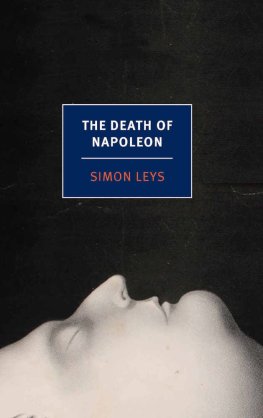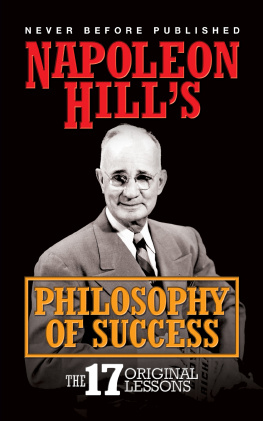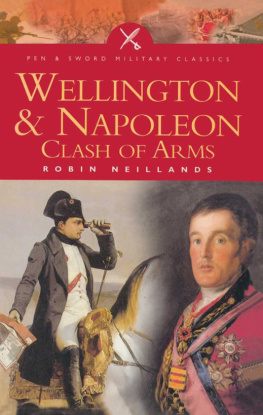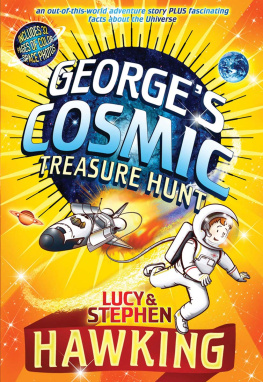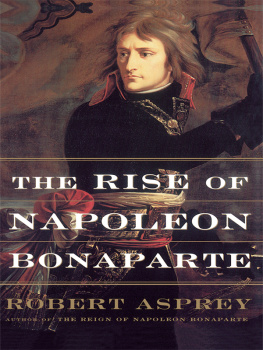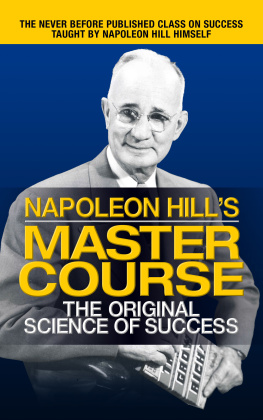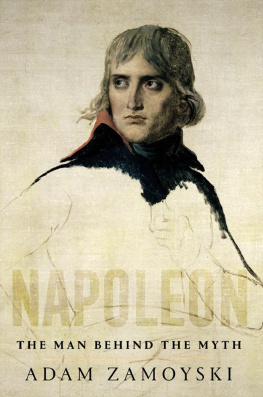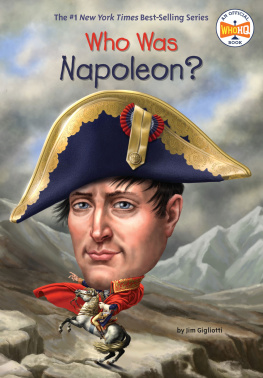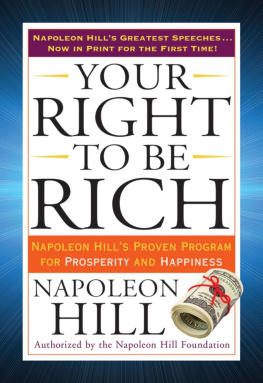CHARGING AGAINST
NAPOLEON
CHARGING
AGAINST
NAPOLEON
Diaries and Letters
of Three Hussars
18081815
Eric Hunt

LEO COOPER
First published in Great Britain 2001 by
LEO COOPER
an imprint of Pen & Sword Books Ltd
47 Church Street, Barnsley, S. Yorkshire S70 2AS
Copyright Eric Hunt 2001
ISBN 0 85052 827 5
A catalogue record for this book is
available from the British Library
Typeset in 11/13 Sabon by
Phoenix Typesetting, Ilkley, West Yorkshire
Printed and Bound in England by
CPI UK Ltd
For Rebecca, Anabel and Madeleine
CONTENTS
Writers, taking their lead from the Great Duke, have often criticized the British cavalry in the Peninsula. Wellington was particularly scathing about the behaviour of the 18th Hussars after the Battle of Vitoria, threatening to dismount them and send them home if he heard any further complaint. Not surprisingly, Regimental histories tend to brush criticism under the carpet and, in Memoirs of the Eighteenth Hussars, Harold Malet referred to the unhappy episode only briefly, but it had been picked up at the time by the press in England and influenced attitudes for some time afterwards. As tends to happen, the distinguished performance of the 18th on other occasions between 1808 and 1815 is often overlooked.
But these are not just accounts of battles and rows with Wellington. The diaries and letters of officers of the 18th provide a fascinating insight to the manners and mores of cavalry officers of the period, as well as delightful descriptions of the countries through which they travelled and of their inhabitants.
Place names
Many of the places referred to by the various writers are difficult to identify on modern maps, but I hope my guesses are correct. For better or worse, I have used the spelling of the country rather than the anglicised version. That still leaves problems in Spain and Belgium, where place names may be in Spanish or Basque, Flemish or Walloon.
Spelling
Endearing as much of it is, it would have been wearing for the reader to be faced with the spelling of the originals and I have therefore corrected it.
E.E.H.
Over the past few years I seem to have bothered any number of people for information and advice and I am afraid some may now be overlooked. If so please forgive me.
When I joined the 13th/18th Royal Hussars in 1949 I first encountered Ralph Dodds, with whom I have been friends ever since. We were both in A Squadron known as the Eighteenth Squadron since amalgamation of the 13th and 18th in 1922. From an early stage he has helped me with both research and comment on this book, but particularly in undertaking the French translation of some of George Woodberrys diaries back into English. Another friend from A Squadron is Peter Waddy, whose kindly expertise in matters photographic has, I fear, not been put to as good use as it deserves.
Gary Locker at Home Headquarters of The Light Dragoons first drew my attention to the Kennedy letters and has assisted me in all sorts of ways, particularly in finding illustrations. Anthony Weldon helped greatly, not least in pointing me towards Henry Wilson of Pen & Sword, as well as in providing photographs of his Kennedy memorabilia. I am indebted to the Assistant Archivist at Bangor, Elen Wyn Hughes, for all her help with the Hughes diaries. David Murphy, of the Dictionary of Irish Biography, provided with alacrity a wealth of material on Irish families.
My wife Gill has not only endured the whole process with remarkable equanimity, but has also helped me with checking transcription of the lengthy original manuscripts Woodberry in particular was verbose to a fault as well as drafts and proofs of this book.
I am also grateful for permission from:
The National Army Museum to quote from the first volume of Woodberrys original diary, as well as from Loftus Otways brief diary.
Sir Anthony Weldon to draw extensively on Arthur Kennedys letters, which have remained in his family since one of Kennedys daughters married the fifth baronet.
The Trustees of the Kinmel Estate, to make use of the Hughes diaries (now lodged with the Department of Manuscripts of the University of Wales, Bangor) and a copy of the portrait of James Hughes.
John Mollo to use the photographs of Robert Boltons and John Dolbells portraits from his book The Princes Dolls.
The Queens Own Hussars Regimental Museum to quote both from the diary of Edward Hodge and the correspondence of William Verner of the 7th Hussars (which is being painstakingly transcribed by Peter Hard).
The Trustees of the 13th/18th Royal Hussars Regimental Museum to use photographs of items from their collection.
A Welshman, an Irishman and an Englishman
The story follows the fortunes of the 18th Hussars, from 1808 to 1815, through the diaries and letters of Welsh James Hughes, Irish Arthur Kennedy and English George Woodberry, as well as other contemporaries including Loftus Otway of the 18th and officers from other regiments.
James Hughes (JH) was born in 1778, third son of Edward and Mary Hughes of Kinmel Park, Denbigh. He was commissioned in 1800 and served as a cornet in the 16th Light Dragoons until 1802. After obtaining a captaincy in Hompeschs Mounted Rifles he transferred to the 18th Light Dragoons in 1803.
Arthur Kennedy (AK) was fourth son of John and Elizabeth Kennedy of Cultra, County Down. His father died in 1802 and Arthur was commissioned in 1803 into the 24th Foot, transferring to the 18th Light Dragoons in 1804.
Loftus Otway (LO) was the fourth son of Cooke Otway of Castle Otway, County Tipperary. He entered the 5th Dragoon Guards in 1796, remaining with them until 1803. After two years in the 8th Dragoons he served on the staff in Canada and transferred to the 18th Hussars in 1807.
The background of George Woodberry (GW) remains a mystery, beyond saying that he was born in 1792 and came from Worcestershire. He briefly served as an ensign in the 10th Foot, before obtaining a cornetcy in 1812 in the 18th Hussars.
Their Regiment
Charles Moore, Earl of Drogheda, had raised the 19th Light Dragoons in 1759 during the Seven Years War. The new regiment was renumbered 18th during cutbacks at the end of the Seven Years War, but as often as not were known as Droghedas Horse. The war with Revolutionary France had been waged for three years before they first left Ireland in 1796, for the West Indies. There they had few battle casualties, but horrific losses from cholera and on return to England in 1798 the Regiment had almost to be re-raised. That task was tackled with great vigour by their new commanding officer, Charles Stewart, in time for the Allied expedition to Holland in 1799. (Arthur Kennedy was related to Stewart through his great-grandmother, Martha Stewart.)
During the brief peace after the Treaty of Amiens, regimental strengths were speedily reduced, but war and enlargement of regiments returned in 1803, when the 18th were stationed in northern England. Later in the year they moved to Ipswich, where Captain James Hughes joined. In 1804 the Regiment returned to Ireland and amongst a number of new officers was Cornet Kennedy. Four of the light dragoon regiments, the 7th, 10th, 15th and 18th, were converted to Hussars during 1805 and 1806, and dressed in uniforms copied from Hungarian light cavalry. For the 18th that was:




